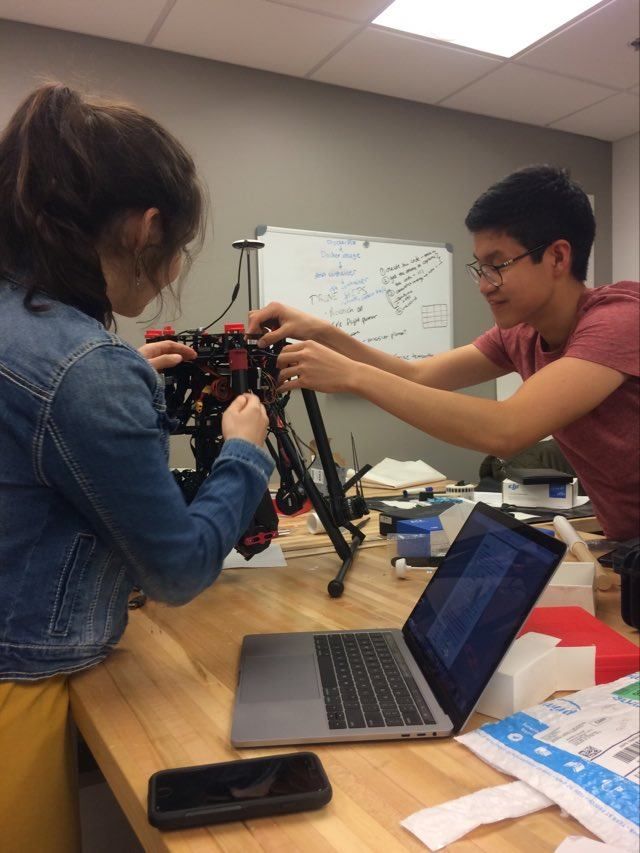QR Code ID from UAV
The Problem
A common challenge in animal ecology is the tracking of individual animals over time for behavioral analysis and population counts (through the mark and recapture method). Current methods include the use of satellite tags, pit tags, or clip tags. Each type has a niche in which it is effective; usually, there is a direct correlation between unit cost and the identifiable distance of the animal. For example, cheaper tags such as pit tags or clip tags require a such a small identification distance that recapture is necessary, which requires additional work and is more invasive for the animal. There is nothing currently available that allows cheap, reliable identification and location tracking at a distance regardless of species. A visual tag system called BEETag was developed to follow the movement of bees within a hive which provided inspiration for this project. We are using AprilTags, which work similarly to QR codes – they are effectively binary for a number with error checking code (which also allows for orientation understanding). The tags have to adhere to an animal – however, this is the only requirement. The material, code color (potentially including non-visible spectrums), size and mounting of the tag do not matter as long as the code can distinguish a threshold between white (1) and black (0). However, we believe the AprilTags can be quickly printed onto sea turtle shells with non-toxic waterproof road paint and large (turtle sized) stamping devices.
Our Proposal
The goal of this project is to paint a visual tag to the back of the captured sea turtles which would act as a visual marker during subsequent UAV flights. Any turtle that is located by a UAV after being tagged will automatically have its unique ID, GPS location, time and heading logged. Live data telemetry will allow researchers to visually observe the wild behavior of known animals during critical nesting months. Population assessments marine animals are difficult as animals may be within the search area but out of sight below the water. We are developing the ability to identify sea-turtles automatically with computer vision. By knowing the ratio of tagged animals to untagged – (essentially a remote tag and recapture system) it will be possible to build an accurate population estimate evaluate current assumptions. Unlike current techniques, the automatic data processing means no intensive post-processing of data is necessary. It is important to note, that this project is a great pilot project; as the same technological set up is easily transferable to a range of applications beyond visual tags.
We Assume that...
the AprilTags and drone noise will not interfere with the lifestyle of the sea turtles
the AprilTags will be captured when the sea turtles are swimming at shallow depths so that the AprilTags will be clearly visible at the height that the drone flys
Constraints to Overcome
Drones and computer vision are both relatively new technologies, and one of the biggest breakthroughs of this project will be being able to seamlessly combine these two platforms. One of our greatest challenges will be getting the drone and computer vision software to work well together, so that when QR codes are spotted, the corresponding GPS location found. Additionally, creating a fast, adaptable, robust, large and portable stamping mechanism to print the AprilTags onto the the turtle shells poses new challenges. After thorough research, we are unable to find any existing technologies that could be used for this niche application. We took brainstorming inspiration from crutches, pinscreens, stencils, and printing presses and created a design with multiple stamping dowels that travel vertically and can be locked at an on or off state to provide the modularity to create distinct AprilTag patterns and fit the contour of a turtle shell.
Current Work
1. Get our drone to be able to fly autonomous missions (can currently fly manned missions). 2. Create a working first prototype of the mechanical AprilTag stamping mechanism. 3. Integrate flight information from the drone with computer vision tag recognition to correspond individual, location and timestamp. 4. Field test entire workflow
Current Needs
Technical knowledge on drones, drone pilot, computer vision experience, and mechanical design and fabrication expertise

